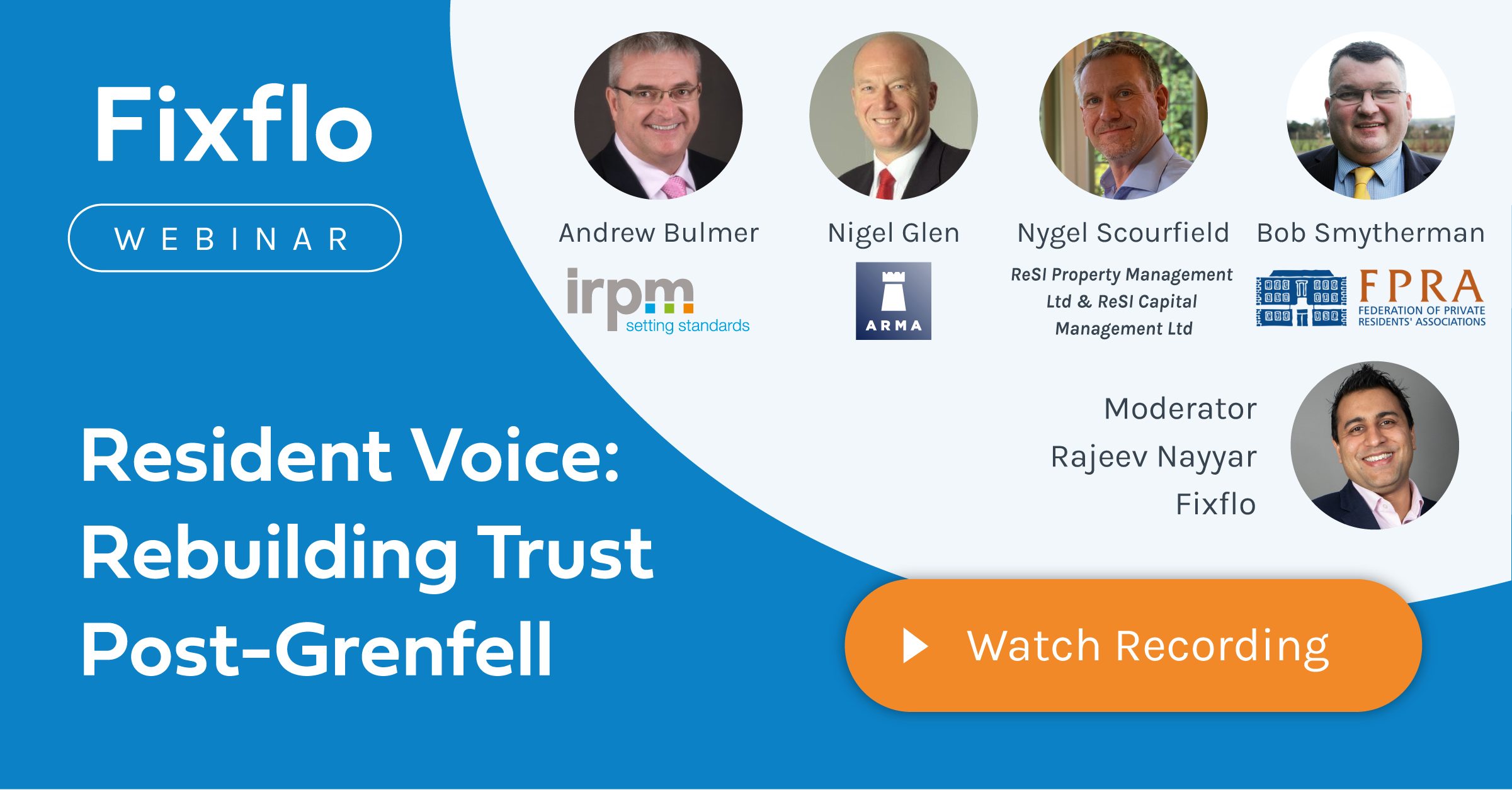As part of our popular webinar series, Fixflo hosted a panel to examine how property managers can rebuild trust, post the Grenfell tower disaster by helping give residents a voice. Andrew Bulmer, CEO of IRPM, Nigel Glen, CEO of ARMA, Nygel Scourfield, Director of ReSI Property Management, and Bob Smytherman of the Federation of Private Residents’ Associations shared their views. Here we summarise our learnings.
Property managers are there to bridge the gap
Our experts all agreed that one of the main roles property managers have to take is bridging the gap between building safety and resident experience. This year, our homes have become more than our castles; they’ve become our offices, gyms, kindergartens, and restaurants which means residents need to see them as sanctuaries rather than prisons. While we wait for the draft Building Safety Bill to define the role of the Building Safety Manager, property managers must bridge the gap.
Property managers need to understand both the block and its context
The block is part of a wider community and will be influenced by the cultural makeup of the area it’s in. In order to understand residents and build trust, you’ve got to understand the cultures and communities they are from. You can’t divorce one from the other.
It’s important to communicate in the way that the residents want
There is no one-size-fits-all solution. Your block will be made up of multi-cultural, multi-able people and you need to find the way that they want to be communicated with and ensure you have the tools to do so. Make sure you’re listening as well as speaking and remember that although it takes a lifetime to build, trust can be destroyed overnight.
Your contractors are an extension of your brand
They may be at your residential block more than you are, so select them wisely. Empowering them to report potential fire safety risks quickly and easily to your property management team means that you will still have eyes on the ground in between site inspections.
Don’t just focus on the block’s permanent residents
Currently, it’s very difficult to know who’s residing in your building as landlords aren’t obligated to tell you if they’ve sold or are renting to Airbnb. While landlords definitely have a part to play in ensuring safety and being transparent, property managers need to make sure safety information is communicated visually around the block as well as in communications. Simple signage detailing fire safety and trip hazards in the building itself could be worth as much as hundreds of pages of resident communication.
Balance the practical with the possible
Every member of our esteemed panel emphasised how important it is to balance the practical with the possible. While in theory, it would be optimal to test every unit in a block for fire safety annually and to undertake other safety measures, 50% of flats are buy-to-let and the rise of Airbnb makes it impossible to know who’s residing in a unit or what’s going on in there around the clock. Implementing a clear definition of the landlord’s responsibility as well as concluding exactly what falls into the remit of the Building Safety Manager should go some way to rebuilding trust post-Grenfell. Good communication should do the rest.
For the full thoughts of our panel, be sure to watch our on-demand webinar Resident Voice: Rebuilding Trust Post-Grenfell.

BLOG DISCLAIMER
This article is intended for information purposes only and does not constitute legal advice. If you have any questions related to issues in this article, we strongly advise contacting a legal professional.
These blog posts are the work of Fixflo and are licensed under a Creative Commons Attribution-ShareAlike 3.0 Unported License. In summary, you are welcome to re-publish any of these blog posts but are asked to attribute Fixflo with an appropriate link to www.fixflo.com. Access to this blog is allowed only subject to the acceptance of these terms.


